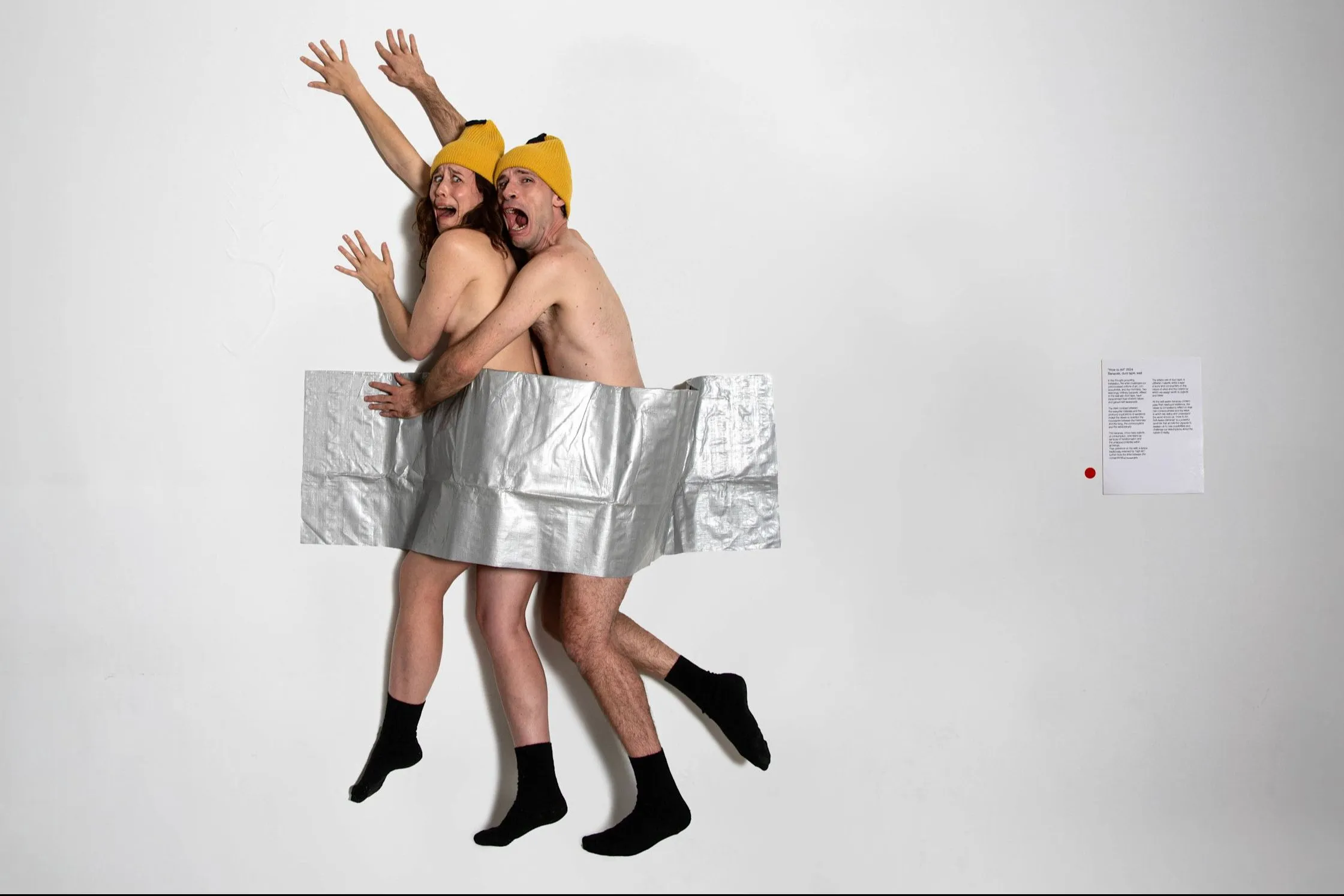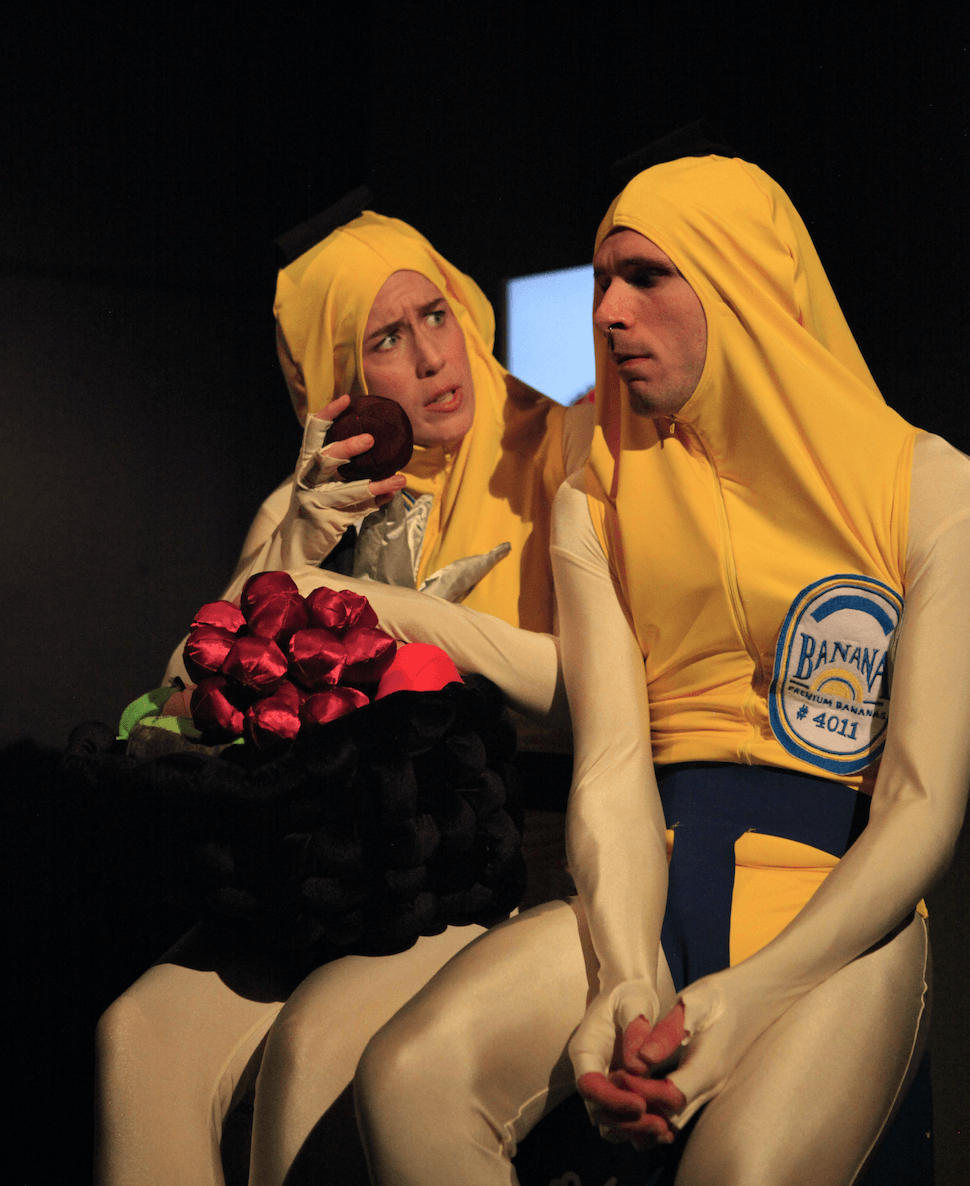More Than Just Money - In-Kind Support Crucial For Creatives
The minds behind Melbourne Fringe-bound production How To Art explain the importance of diversifying their support to achieve their dreams.

Everyone knows the end-goal when it comes to a production.
A stage, an audience, artistic satisfaction and recognition of your creative talents.
But the journey there can take many forms - most of them challenging.
The production team of How To Art - comprised of show creators and performers Katie Burson and Georgie Llewellyn plus producer Charlie Underhill - have an award-winning show that is destined for the international stage this year.
But having miles under the belt with a show doesn’t mean it’s easy to get there.
Fundraising
Using humour to tackle the issue of how challenging it is to make art in the current climate, the irony of needing a fundraiser season (17-19 July at Auckland’s Basement Theatre) isn’t lost on them.
Burson giggles “It's funny that this is the first question, because this is something that we laugh about all the time. In terms of how challenging it is - I think it is really challenging. We know there's a diminished funding pot with Creative NZ (CNZ) - on top of that, the cost of living is crazy. So it's harder to take the time to make stuff for free, essentially, when you have to work to pay money to pay rent - even thinking 10 years ago, it was easier to make something in our spare time.
Llewellyn adds “You have to be in quite fortunate positions to be able to do things like take other work off or even switching shifts - having that time and financial flexibility to make room to make art.”
How To Art has already received recognition at this year’s Wellington Fringe, receiving the Melbourne Fringe Tour Ready award. It comes with an invitation to be part of the internationally-acclaimed festival in October and covers the administrative costs of being in the Victorian capital like venue hire and technical time.
But even with that leg-up, it’s still not a given they can take part - hence the fundraiser.

Underhill explains “Accommodation and flights are the two biggest things - actually getting there from New Zealand is a whole other cost at the prize won’t cover.”
Llewellyn underscores “This season is a fundraiser so that it eases the financial pressure on us to have to pay for everything or incur personal debts in order to keep giving the work life and taking it to different places.”
There is no silver bullet - and it’s where being creative comes in handy - specifically, being creative where the money comes from. Many in the sector will nod knowingly as Burson goes through the route they’ve taken to make - and continue - the show.
“We ran a Boosted campaign last year before our debut season, we also received a very small amount of Creative Community Scheme funding - without those two funding streams, we wouldn't have been able to make some of the high quality elements in our show.
“We committed to to a 10-night Melbourne season while we were still waiting for the results of a CNZ application - that's a massive financial risk - and we weren’t successful with that funding. We still have to do the season - we want to do the season - so this fundraising season is crucial.
“We also have done sales of merchandise - that's attached to the show and we have done a few different little fundraisers.”
Support in different forms
Money talks - but in-kind support is the warm embrace that can keep creative fires burning.
When asked what the key to not just surviving - but thriving - without public funding, Burson pauses.
“We have been really fortunate to be supported by multiple arts residencies during the making of the show. We had a residency with Wellesley studios, Capital E in Wellington and TAPAC in Auckland and ongoing support from those studios plus in-kind support from Auckland Theatre Company and Studio One Toi Tū - where I was a resident a few years ago.
“We spent over 400 hours making, rehearsing and remaking our show over the last 2 years - if you count that up in terms of just the cost of rehearsal venue, that's a lot of money so that kind of in-kind support is a huge factor because rehearsal space is really, really expensive.”
Underhill seconds that statement “Rehearsal space is one of the biggest upfront costs for any theatre production - especially for a show like this. These guys need time to get their timing to a tee and that costs so much money.”
Llewellyn affirms the need for a suitable rehearsal venue.
“When you've got such a physical show with things like acrobatics and dance sequences - there's only so much you can safely do in a lounge, so that makes such a huge difference.
“In terms of surviving, having a strong sense of artistic community (is key). Not just these various residencies and institutions, but other artists as well - just supporting each other to help with motivation and also building a team - we're so lucky to have a team of artists who are willing to jump on with us and put their best work in, even though we're not in the best financial situation.”
Community building is a theme that Burson backs.
“TAPAC is a venue that have been enormously supportive - even though we're not presenting there in this iteration - and I think that's a key for our industries, for all of these different parts of the industry to come together. That's venues, presenters, individuals, artists, collectives. Yeah, it's very important that we work together.”
Is there a line between artistic integrity and compromising to get the work scene, if so, where is it?
“We’re pretty dedicated to not compromising what we want to make - that's meant that we've taken a lot of time to work slowly in order to create what we wanted to create. We could have compromised, we could have made it really quickly and that would have been cheaper, but we didn't want to do that. But we were in a really lucky position because we had lots of different support systems around us.
We couldn’t do this on repeat though - it really burns us out. We understand why people have to compromise - it’s really tiring.”